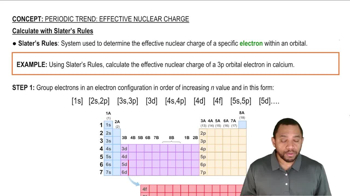A 25.5-g aluminum block is warmed to 65.4 °C and plunged into an insulated beaker containing 55.2 g water initially at 22.2 °C. The aluminum and the water are allowed to come to thermal equilibrium. Assuming that no heat is lost, what is the final temperature of the water and aluminum?

Palmitic acid (C16H32O2) is a dietary fat found in beef and butter. The caloric content of palmitic acid is typical of fats in general. Write a balanced equation for the complete combustion of palmitic acid and calculate the standard enthalpy of combustion. What is the caloric content of palmitic acid in Cal/g? The standard enthalpy of formation of palmitic acid is -208 kJ/mol and that of sucrose is -2226.1 kJ/mol. [Use H2O(l) in the balanced chemical equations because the metabolism of these compounds produces liquid water.]
 Verified step by step guidance
Verified step by step guidance
Verified video answer for a similar problem:
Key Concepts
Combustion Reactions

Enthalpy of Combustion

Caloric Content

If 50.0 mL of ethanol (density = 0.789 g/mL) initially at 7.0 °C is mixed with 50.0 mL of water (density = 1.0 g/mL) initially at 28.4 °C in an insulated beaker, and assuming that no heat is lost, what is the final temperature of the mixture?
Palmitic acid (C16H32O2) is a dietary fat found in beef and butter. The caloric content of palmitic acid is typical of fats in general. Which dietary substance (sugar or fat) contains more Calories per gram? The standard enthalpy of formation of palmitic acid is -208 kJ/mol and that of sucrose is -2226.1 kJ/mol. [Use H2O(l) in the balanced chemical equations because the metabolism of these compounds produces liquid water.]
Hydrogen and methanol have both been proposed as alternatives to hydrocarbon fuels. Which fuel contains the most energy in the least mass?
